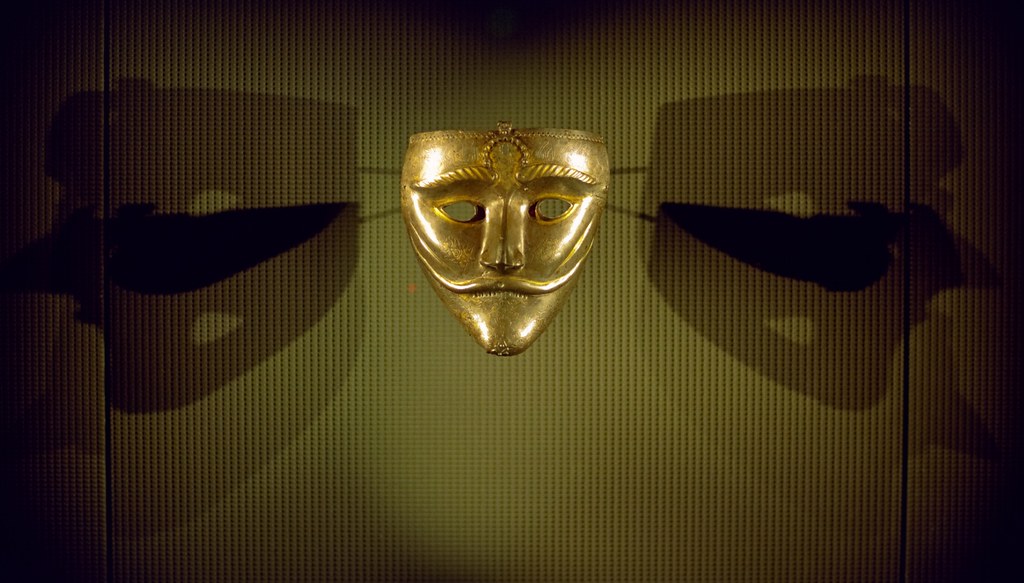
If you go to the Museum of Islamic Art in Doha you will see this mask. It is very strikingly presented. One of the great things about the way the Museum have displayed it is that they have lit it in a way that makes very interesting patterns from the light and shadows. I wanted to capture this.
The first thing to recognise was that I was only going to capture the museum's lighting by NOT using a flash. The museum allows no stabilising aids (no tripod or monopod) so there are some things I would need to consider to get the shot I wanted.
I would have to use a higher ISO. I only had ISO 200 film loaded so I couldn't do much about that. The only way to improve the shutter speed any further was to use the largest possible aperture. Here is where having the 50mm f1.4 prime lens fitted was a great help. This still left a rather slow shutter speed so it was a matter of bracing as well as possible and using the most gradual "sniper" release for the shutter. This means easing up on the shutter and not making any sudden moves when it fires. After the shot your finger should still be in the same place.
Once I had decided to take a "natural light" shot I had to decide the framing. The mask, being the focus, should be as large as possible in the frame. However, the picture needed to include all the light and shadow around it that made it so interesting. I moved to frame tightly on the edges of the spotlight lights. This gave me a minimum of wasted space in the frame. Always try to use every milimeter.
Finally, I had to consider the shape of the pattern. It is a symmetrical lighting pattern so I knew that I should avoid shooting the mask at any kind of angle. The only way to have the lighting appear symmetrical was by being directly in front of it. Always strive to get the picture right when taking. This means being as square on as possible for a shot like this. It also means that unless a deliberate tilt is intended for effect the camera should always be dead level.
The final step is afterwards. Once you have your picture scanned don't forget that the image you want has a different shape to the frame on the film. If there are areas above and below that are not part of your intended composition trim them off. Every part of a finished image should work towards that image.
No comments:
Post a Comment